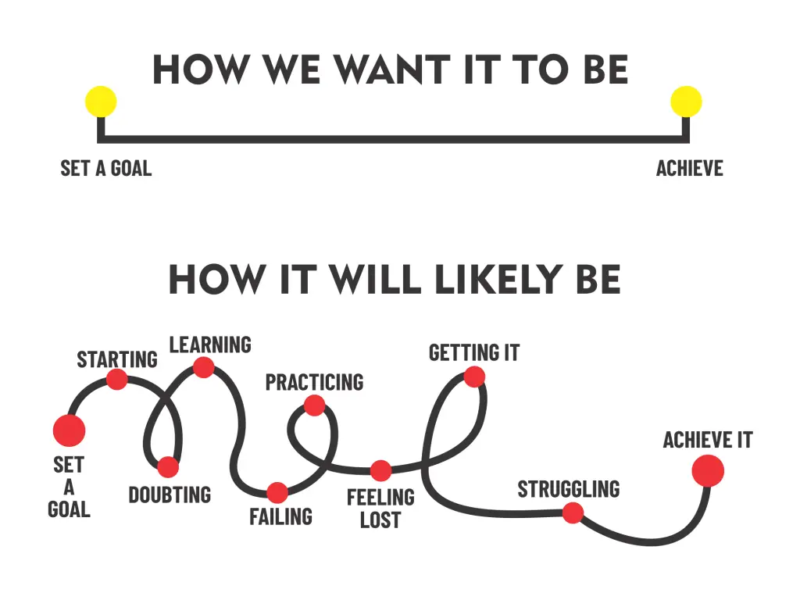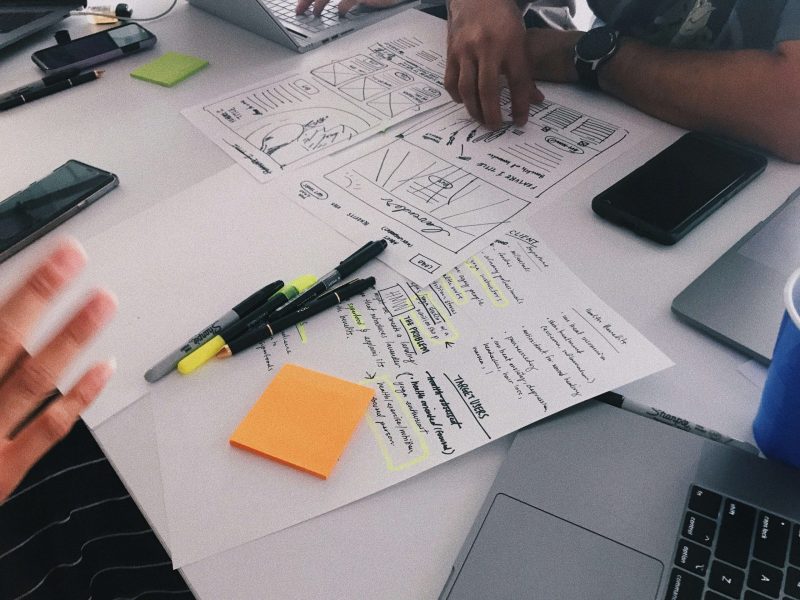Design thinking is a user-centered approach to problem-solving that involves empathy, creativity, and experimentation.
The 4D UX methodology is a specific way of applying Design Thinking to user experience design. It consists of four steps: discover, define, design, and deliver, and it addresses almost all facets identifying:
- The target users,
- Benchmarking,
- Defining requirements,
- Project management,
- User experience design,
- Development and quality assurance,
- As well as non-development tasks such as software and technology selection, systems, and content strategy.
The phases of the Design Thinking process are:
- Discover — The discovery phase involves researching and understanding the needs and behaviors of users, as well as the context in which the product will be used. This helps to identify problems and opportunities for design.
- Define — In the define phase, the design team uses the insights from the discovery phase to create a clear and concise problem statement. This statement guides the design process and ensures that the team stays focused on addressing the identified problem.
- Design — The design phase is where the team comes up with creative solutions to the problem. This can involve sketching, prototyping, and testing different ideas with users to see what works best.
- Deliver — in the delivery phase, the team works to bring the chosen design solution to market. This can involve refining the design, building the final product, and launching it to users.
Discovery phase
In Design Thinking, this is the phase where we do extensive research on our target users, understand their current challenges, and the efforts they make to solve their needs and pain points. Usually, we invest time observing the environment in which they work to develop insights.
Here’s how the discovery phase takes place in a web design process
- Requirements and Specifications: The complete set of specifications and functionality of the project is captured here. Once we have the specs clear, we may proceed to further steps.
- Sitemap: A sitemap is a high-level diagram portraying the general structure and architecture of the website. The goal of a sitemap is to identify the pages, sections, and navigation items that will make up the site.
Define phase
This stage in the Design Thinking process is also known as dynamic or immersive UX.
This phase focuses on defining the goals and objectives of the UX design. While we’re identifying the target audience and their needs.
The define phase typically involves conducting research and data analysis to gather information about the user group and their behavior, preferences, and expectations.
This information is then used to define the overall concept and direction of the 4D UX design.
In this stage, designers may also create user personas, which are fictional characters that represent the typical user of the UX design, to help guide the design process.
The goal is to ensure that the 4D UX design is tailored to the needs of the target audience. Also should be aligned with the overall goals of the project.
Design phase
The design phase is focused on creating a detailed plan for the user experience. You should take into account factors such as the user’s goals and needs, the technology that will be used to create the experience, and the overall look and feel of the experience.
During this stage, UX designers use a variety of tools and techniques to create wireframes, prototypes, and others for the stakeholders. They may also conduct user research and testing to gather feedback and refine their designs.
The goal of the design phase is to create a detailed plan for the UX that can be used as a blueprint for development.
Overall, this stage is a critical step in the design process, as it sets the foundation for the UX and helps ensure that the final product will be effective, engaging, and enjoyable for users.
Deliver phase
The delivery phase is the final stage of the Design Thinking process, where the completed solution is delivered to the user.
This phase involves testing the product to ensure it meets the user’s needs and expectations, as well as any technical or performance requirements.
It also involves rolling out the product to the user base and providing support and maintenance as needed.
The main goal of the delivery phase is to ensure that the product is successful in the market and meets the needs of the user.
Conclusion
Overall, the 4D UX methodology is a structured and user-centered approach to design. It helps teams to create solutions that meet the needs of users and solve real-world problems.
Finally, I’d like to recommend The Design Thinking Life Playbook as a valuable resource for anyone who’s seeking to navigate the complexities of personal and professional life changes through the use of Design Thinking.



One thought on “Design Thinking the 4D UX methodology”